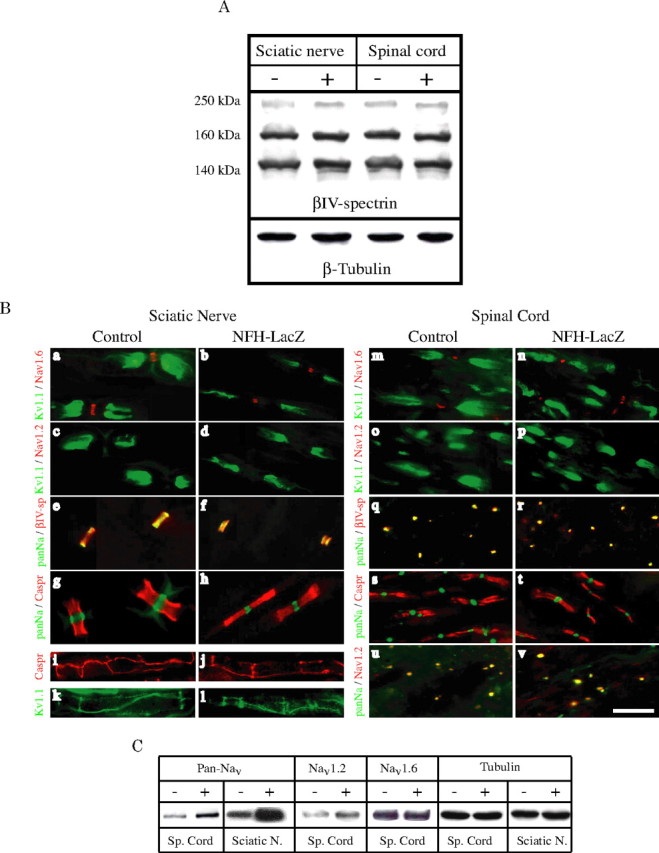Figure 5.

Molecular organization of nodes of Ranvier. A, Western blot analysis of βIV-spectrin in 4-month-old control (−) and NFH-LacZ (+) mice. Anti-βIV-spectrin antibody recognized three bands of 140, 160, and 250 kDa. The lightest band corresponds to βIVΣ6-spectrin and the heaviest to βIVΣ1-spectrin. The amount of βIV-spectrin is unchanged in transgenic sciatic nerve and spinal cord. Tubulin is used as an internal control. B, Sciatic nerves (a–l) and spinal cord sections (m–v) from 4-month-old (a–t) and postnatal day 10 (u, v) wild-type or transgenic mice were immunostained using antibodies to Caspr, pan-Nav channels, Nav1.2, Nav1.6, Kv1.1, and βIV-spectrin. Remarkably, all of these components were correctly localized in both normal and transgenic fibers. However, in transgenic mice, the paranodes are longer in the PNS when compared with control samples. The internodal localization of Caspr and Kv1.1 is also normal in transgenic sciatic nerve (i–l). The switch of sodium channels is correctly achieved in the absence of NFs because in spinal cord, Nav1.2 is present in nodes of postnatal day 10 NFH-LacZ mice (v), and then replaced by Nav1.6 in adult mice (t). Scale bar, 10 μm. C, The amount of voltage-gated sodium channels (pan-Nav) is increased in both the CNS and PNS of NFH-LacZ mice. The Nav1.2 amount is increased in transgenic spinal cord whereas the Nav1.6 amount is normal. Tubulin is used as an internal control.
